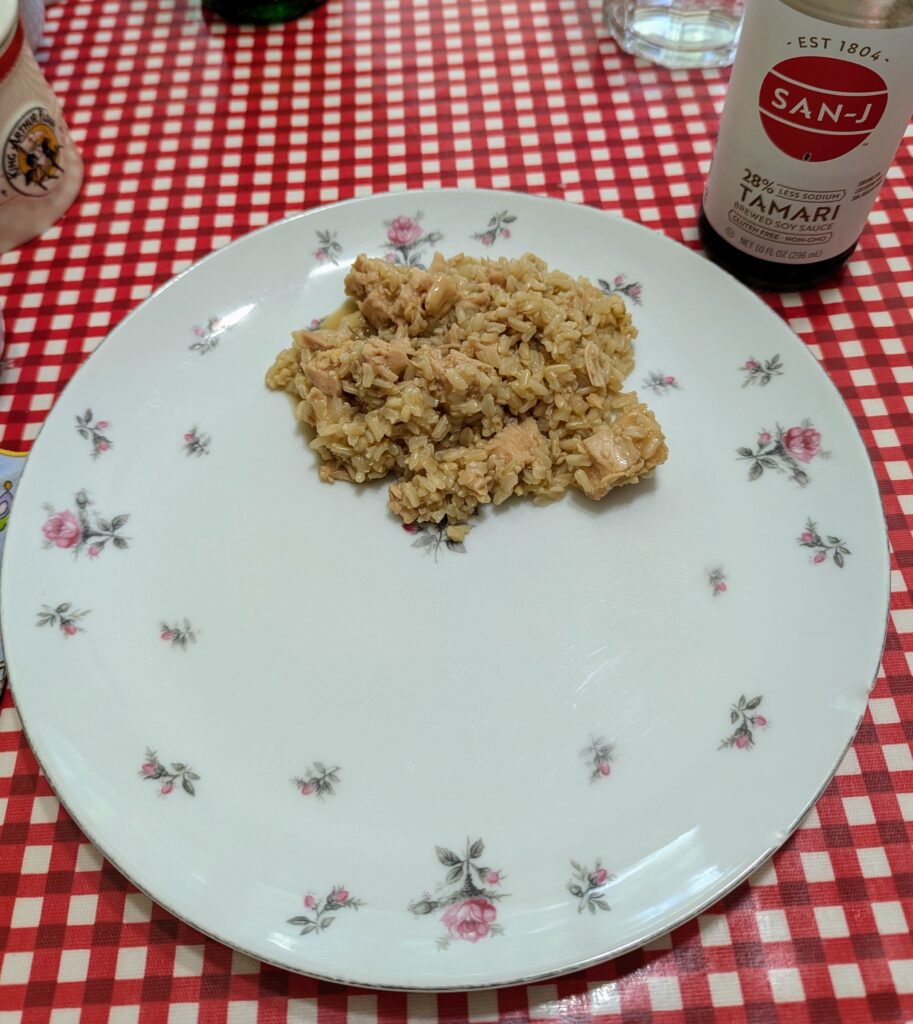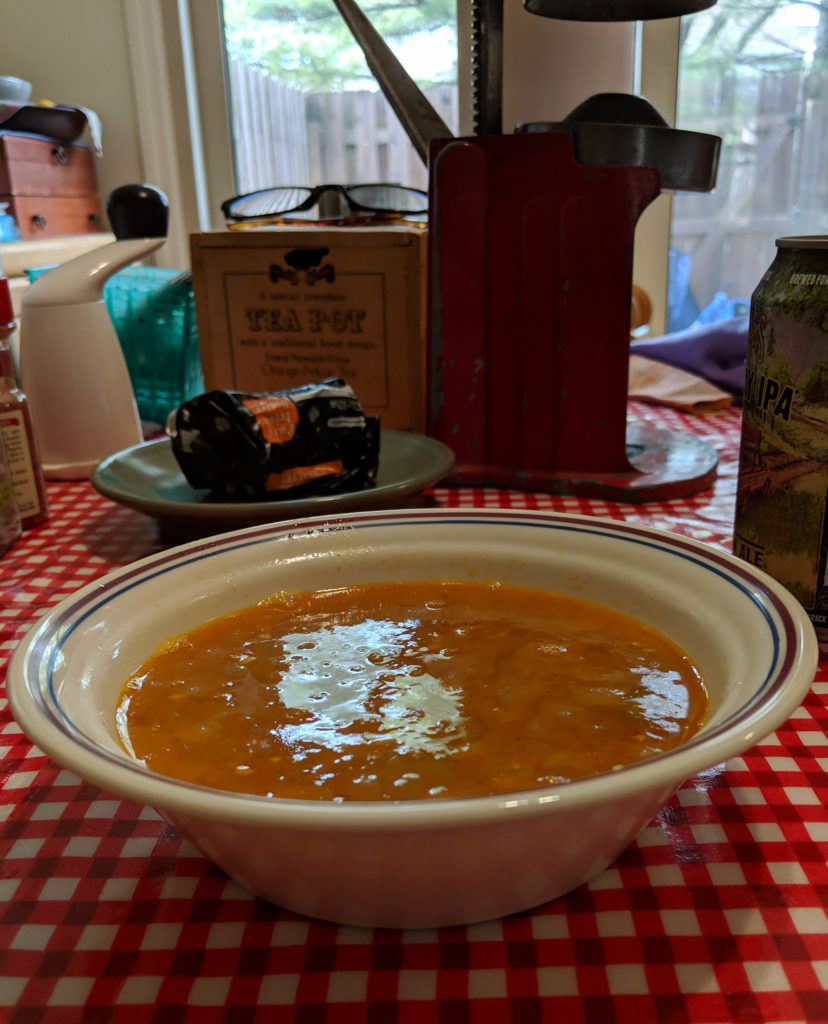Rice Philip: ½ shallot, chopped, 1 T minced garlic, 1 cup bone broth, 1 can chicken breast meat, ½ cup brown rice. Soy sauce to taste after serving.


Among the things that I pay more attention to than I ought is a vast swath of preliminary research (and guesses based on preliminary research) about how large physical things (like diet and exercise) work at the scale of cellular biology.
To work though an example:
This suggests a simple protocol, good for your tendons, ligaments, and cartilage, but also good for skin and hair:
This is why my thighs are really sore this morning.
I have been amused to see “bone broth” trending of late, as I can’t remember the last time our household cooked anything with a bone in it and then failed to make broth out of it. It has been decades, at least.
(If something just has a bit of bone, like a serving of ribs or a bone-in steak or chop, we put the bone in the freezer and then throw it in with the next carcass we boil down for broth.)
Still, with broth showing up so much in the media lately, I keep wanting more of it (due merely to the power of suggestion), and although we eat plenty of meat, our roasting of carcasses hasn’t quite kept up with our broth needs.
So Thursday I swung by the butcher and got something over 4 pounds of frozen chicken necks. (They freeze them in a big trough-shaped container from which they can saw off a block of about three inches high by 4 inches deep by as long as someone wants.)
I put the block in a roasting pan and put it in the oven at 325℉ until it started being possible to pull off individual necks. Then I turned it up to 400℉ so I could get a bit of browning of the skin and pick up some nice roasty flavor. Once I had the necks a little bit roasted, I divided them between two big soup pots, added a little cider vinegar, a roughly quartered onion, some celery tops, and water. Then I boiled them for 3 or 4 hours, which wasn’t as long as would be ideal, but thawing the big block had taken longer than I’d expected and it was getting on to bedtime. Yield: about 12 cups of broth.
The butcher also sells cow femurs to use for broth, but that’s crazy. The good stuff in broth comes at least as much from the associated connective tissue as it does from the bones themselves. What you want is something like a tail or a back or a neck—something with lots of cartilage, ligaments, and tendons along with the bones. Skin is nice too.
Today I used three cups of my fresh broth and three cups of frozen broth from a recent smoked chicken carcass to make some lentil soup (with red lentils and red carrots, but foolishly not red onions or red potatoes, even though I had some of each).

It came out a little neutral in flavor—it had some dried red pepper as well, but turned out not to be as spicy as I’d expected. I added extra salt and black pepper and vinegar at the table, and it was yummy. I figure slightly neutral will be great for leftovers, as we can mix up the spices however we want.